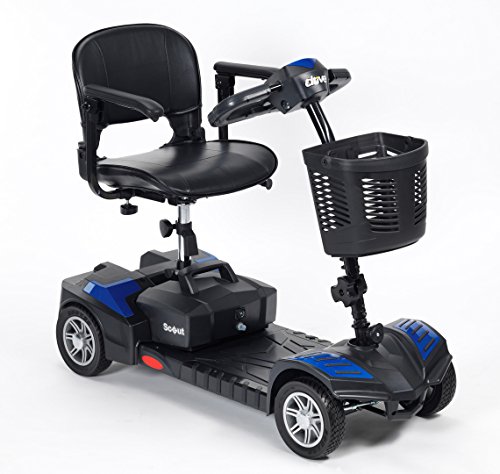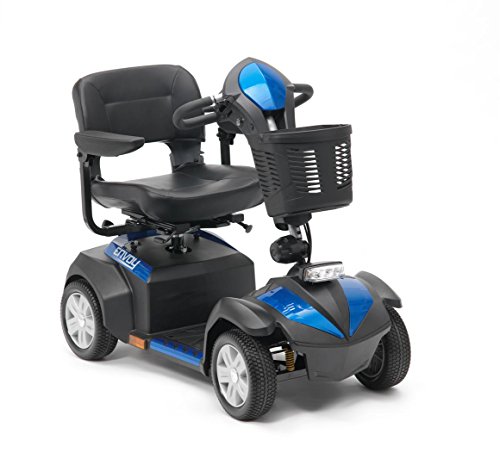3 Ways The Can Mobility Scooters Go On The Pavement Influences Your Li…
페이지 정보
작성자 Kerrie McIlveen 작성일24-07-18 04:34 조회27회 댓글0건본문
 Can Mobility Scooters Go on the Pavement?
Can Mobility Scooters Go on the Pavement? Mobility scooters provide you with the freedom to shop, meet friends or pop into your local café.
Mobility scooters provide you with the freedom to shop, meet friends or pop into your local café.Class 2 and 3 mobility scooters may be driven on the pavement, but never on bus lanes or cycle-only routes.
In general, it is not advisable to drive a scooter on any road that has dual carriageways, which have speeds of more than 50mph.
Class 1
If you're just beginning to learn about using a mobility scooter, it may be best to start off slow perhaps on the pavement and then proceed to the road once you're comfortable. It takes time to get comfortable with the controls, just as when you drive a car. It is not necessary to have an driving license for a class 1 scooter, unlike cars. However, it's always recommended to read the Highway Code For Mobility Scooter Users.
When operating on a mobility scooter, it's important to remember that pedestrians are also present in the area and have priority over other traffic. It is crucial to maintain a safe speed and never interfere with traffic flow, particularly in busy areas. Wearing a helmet and wearing the appropriate safety gear will reduce your risk of injury.
The speed allowed for mobility scooters on sidewalks is usually about 4 mph, which allows for a safe rate of travel without creating congestion or putting pedestrians in danger. Furthermore, mobility scooters must be equipped with functional lights and reflectors to improve visibility in low-light conditions.
A class 2 scooter is a portable device that is able to travel at speeds up to 4 miles per hour, so you can use it on sidewalks and on the road (if there's no pavement). You must adhere to all traffic laws, which includes stopping at intersections and giving space to pedestrians. Moreover, you should always keep an appropriate distance from other pedestrians and use crosswalks to avoid collisions.
Class 3 scooters are more powerful and travel up to 8 miles per hour. These scooters are ideal for long journeys or shopping trips. They can be used on zebra crossings and sidewalks. But, you shouldn't use them on motorways or bus lanes. Also, they must have the ability to limit their maximum speed to Envoy 4 Lightweight Mobility Scooter with Basket mph when on the pavement, which is typically achieved by using switches.
When operating a mobility scooter, the most important thing you should keep in mind is that you put your safety and the safety of others first. Always operate your scooter at an appropriate speed. Do not block pedestrians' paths and do not transport passengers on your scooter. It is also recommended to avoid drinking alcohol or taking drugs that could induce drowsiness while operating your vehicle.
Class 2
Class 2 mobility scooters have a maximum speed limit of 4mph and are typically used on sidewalks and pedestrian areas. Although they can be driven on the road however, it is not recommended to exceed this speed limit (unless you own a class 3 mobility scooter).
If you have a Class 2 scooter, you need to ensure that you don't go up or down kerbs that are too high for your scooter to get over. If you do, it could cause your scooter to lose control or fall over. If you're unsure about the proper way to climb or descend a kerb, check with your manufacturer for instructions. When going downhill, you should be aware if the terrain is uneven. You must also be cautious when approaching a curb; If you accelerate your scooter too fast it could tip over.
It's also recommended to avoid riding your scooter on cycle-only paths because you may hinder access for pedestrians and cyclists. It is also recommended to avoid driving your scooter on dual carriageways, motorways or highways unless you have a flashing amber light installed.
You can use your Class 2 scooter inside buses. However you must take a course of instruction to learn how to safely exit and enter the vehicle. You should follow the code of conduct set out by Confederation of Passenger Transport to keep yourself and other passengers in danger.
A Class 2 scooter does not require a driver's license. You still need to register your scooter (V55/4 when you own newer model or V55/5 in the event that you have an older model) with the DVLA. You'll also have to purchase an telescopic rear-view mirror a hazard alert switch, and lights that are compliant with the Road Vehicle Lighting Regulations. Also, you'll need to buy a backup battery and keep it charged regularly. We recommend visiting our showroom to test various mobility scooters before settling on the right one for you. We have a variety of mobility products on display and our friendly team can assist you in finding the ideal model.
Class 3
Mobility scooters are classified into two main categories which are class 2 and 3 scooters. Both have their own advantages and benefits, but it is important to know the differences between the two prior to deciding on which scooter to purchase. Class 2 scooters weigh less and are smaller than class 3 models. This makes them easier to store and transport. They are also more maneuverable and allow them to move around shops and stations. However class 2 mobility scooters are limited to 4 mph on pavements, and cannot be driven on a cycle-only path or road.
Class 3 mobility scooters are more powerful and can achieve speeds of up to 8 miles per hour. They can be used on the road and are commonly used for long distance travel. Like any vehicle, it is important to follow the highway code. Also, ensure that your scooter is properly lit and indicators so that other road users can see the vehicle. It's also a good idea to familiarise yourself before driving because it can be uncomfortable to be behind the wheel at such a high speed.
The answer to this question varies on the person's needs and lifestyle. In general, class 3 mobility scooters are best suited to people who require greater independence than crutches or a manual chair can offer. It is crucial to keep in mind that if you are considering buying a class 3 mobility scooter, then you'll have to demonstrate your ability to operate safely and responsibly in order to be approved by the DVLA.
The most frequently asked question we hear is "can I ride on the pavement using a My Mobility Scooters scooter of class 3?" The answer is yes, provided that you're within the speed limit of 4 miles per hour. This is to protect yourself and other pedestrians from harm and to avoid collisions. It is not recommended to drive on a class 3 scooter a dual carriageway without an amber flashing signal.
Right of the way
Mobility scooters are an excellent way to move around in a relaxed and comfortable manner. They are still motorized vehicles and should be used in public areas safely. Many people wonder whether it is legal to ride a scooter on the road and at what speeds they are allowed to travel at. A majority of states permit people to drive their mobility scooters on pavements but there are a few rules and regulations that you need to know.
All mobility vehicles in class 2 must be limited to 4mph on the pavement or in pedestrian areas. This is to ensure that pedestrians have a a reasonable chance of being seen by the rider. It is also not permitted for any kind of mobility scooter to be used on paths marked 'cycle only'. This is to ensure the safety of all users and to avoid any unnecessary injury or damage.
In general, it is best to avoid driving on busy roads. These vehicles aren't built for these speeds and could cause considerable damage if they strike anyone or something. Additionally, they are less noticeable to other drivers than cars and are more likely to be involved in an accident. Be sure to check the local laws before driving on the road. Also, ensure that you obey all traffic signs and signals.
Be careful crossing driveways and roads. Always walk at the correct angle and avoid going up or down kerbs higher than the recommended heights by the manufacturer. If you are able traverse the road, do it with an un-dropped kerb. This will provide you with a an easier route and make it easier to turn corners and intersections.
Wear a helmet when you take a ride on or drive a scooter. Avoid wearing a helmet when you are under the influence of. It is also a good idea to wear reflective clothing and bright clothes to help you be more visible in dim lighting. It is also advised to avoid wearing loose fitting clothes that might be caught on the wheels of the scooter.
댓글목록
등록된 댓글이 없습니다.

